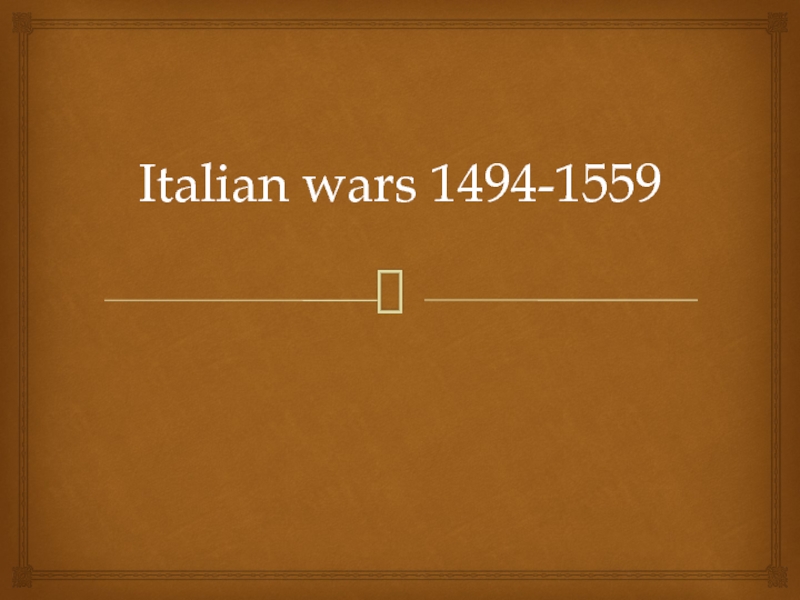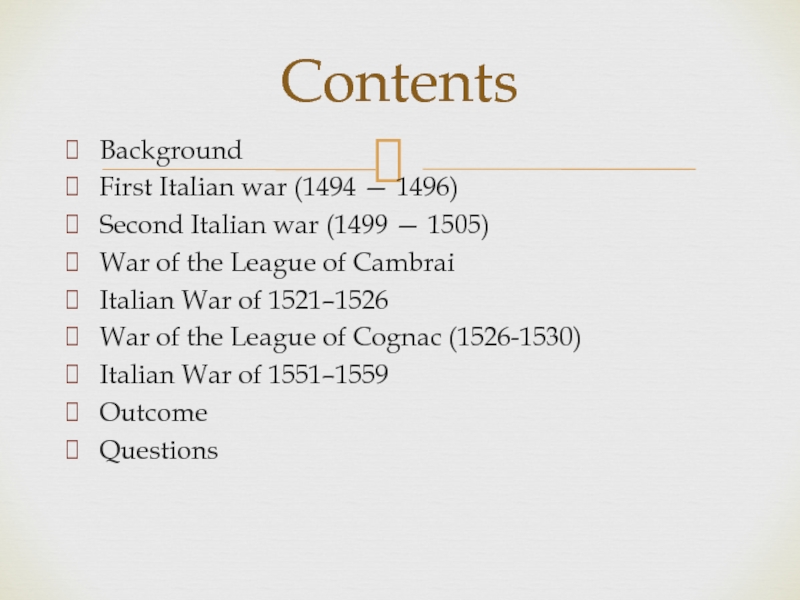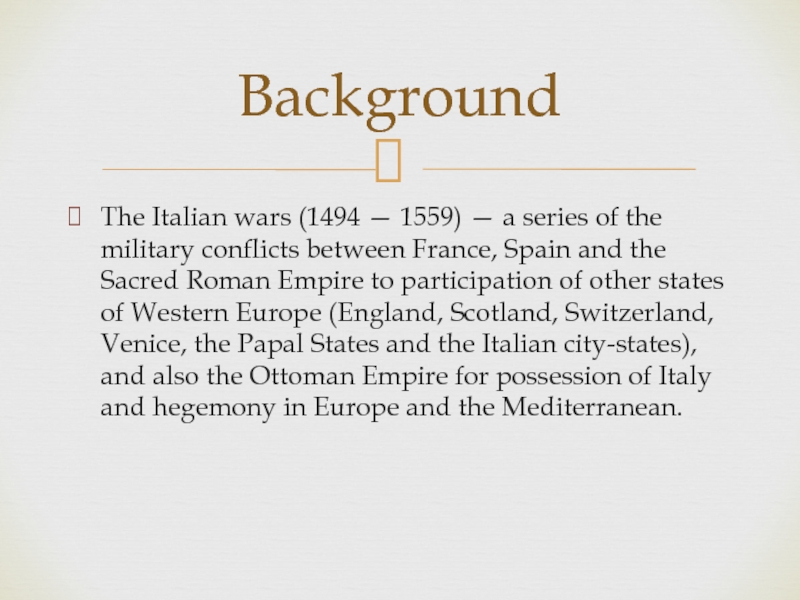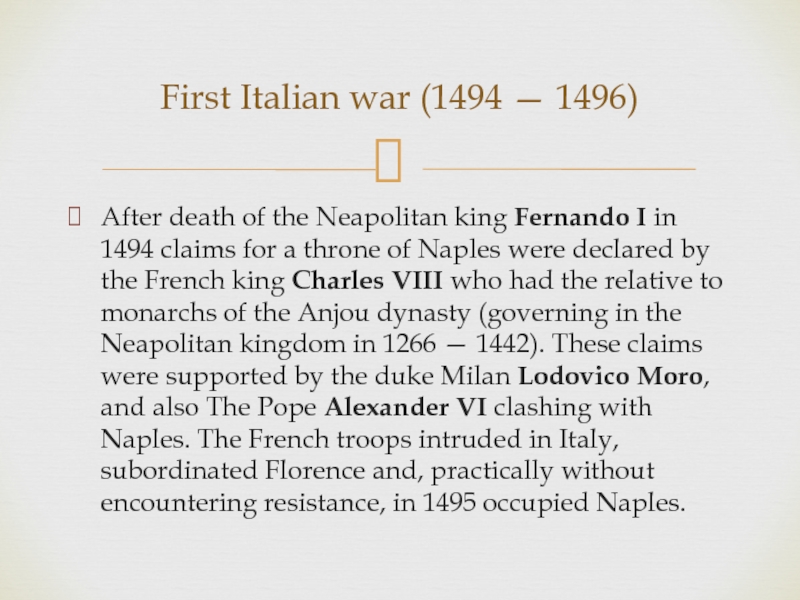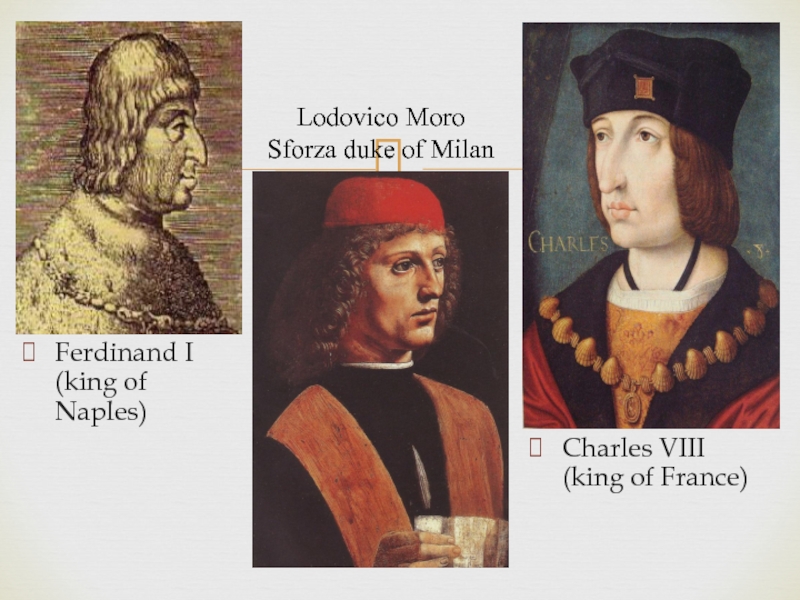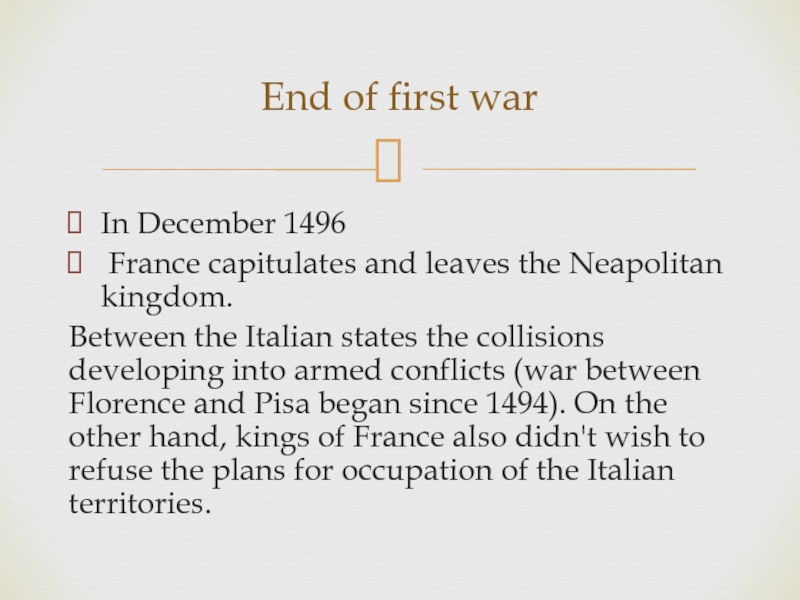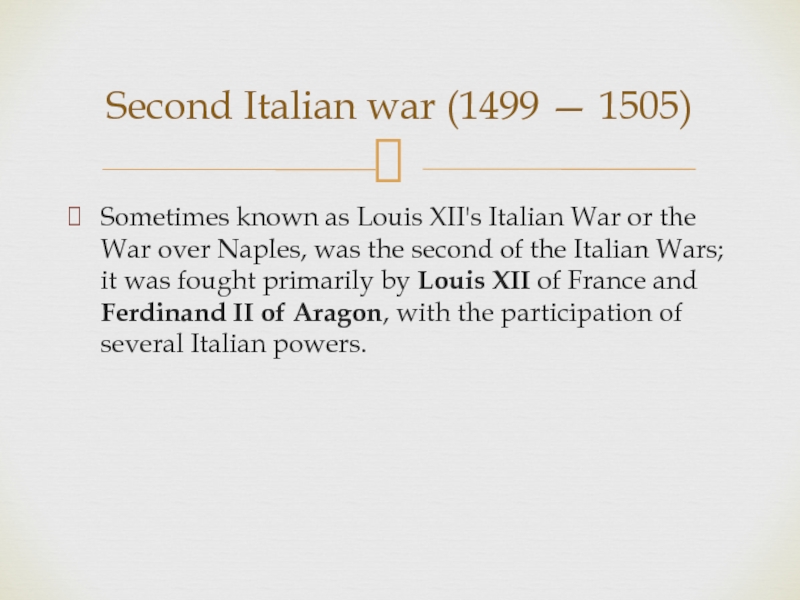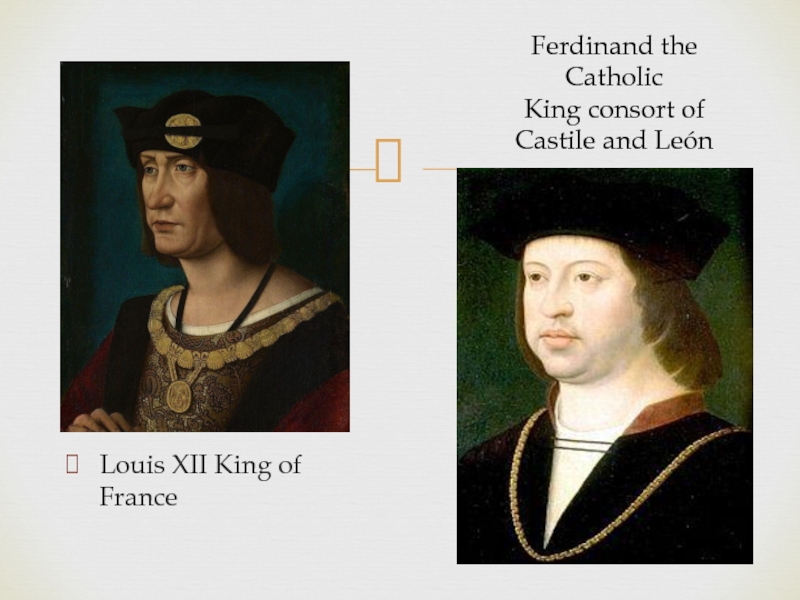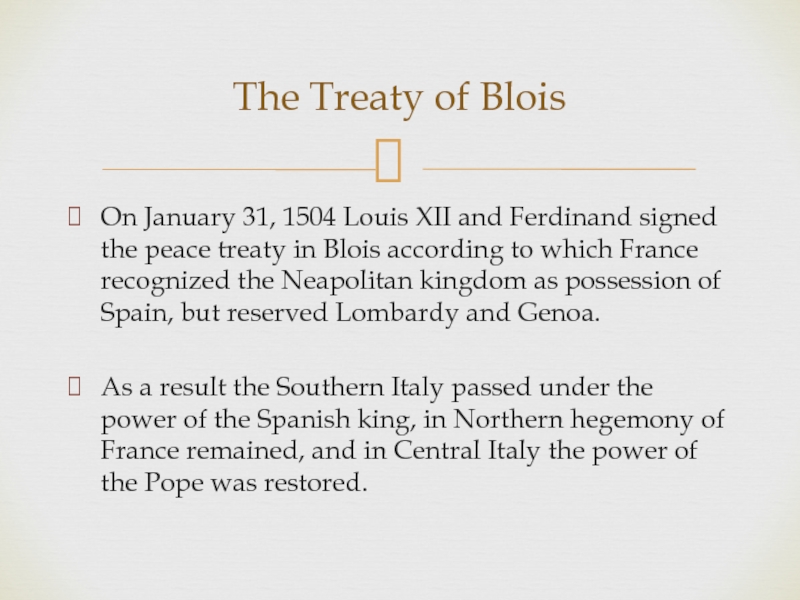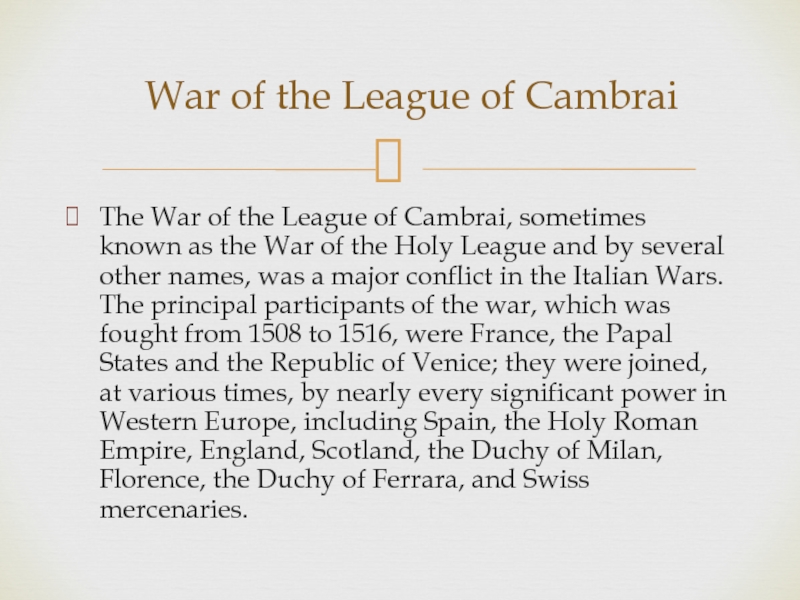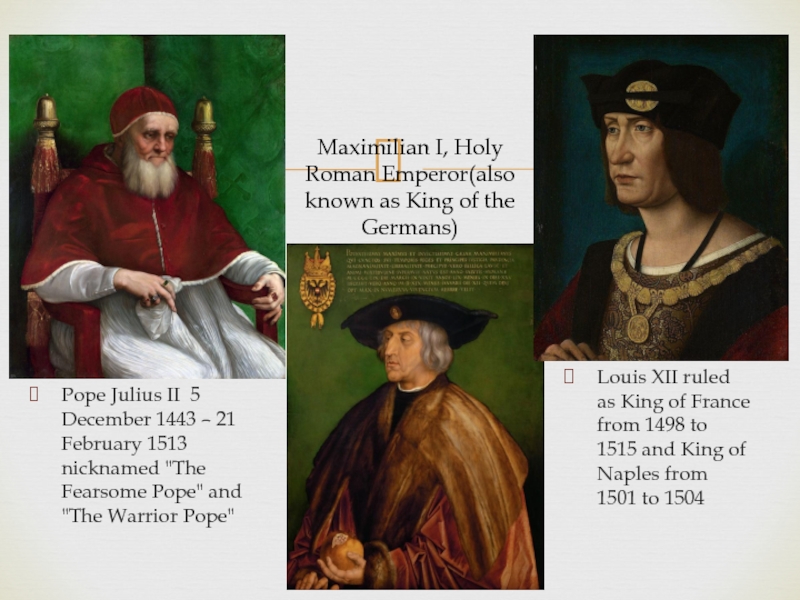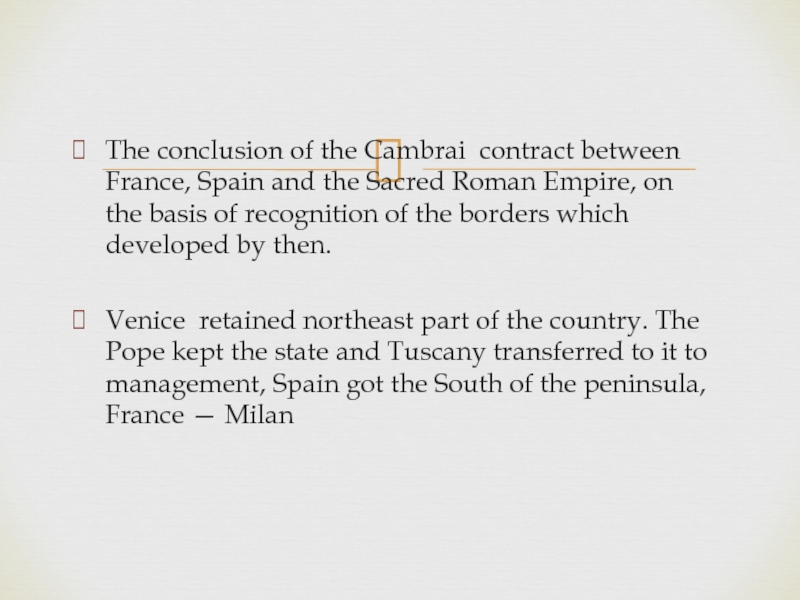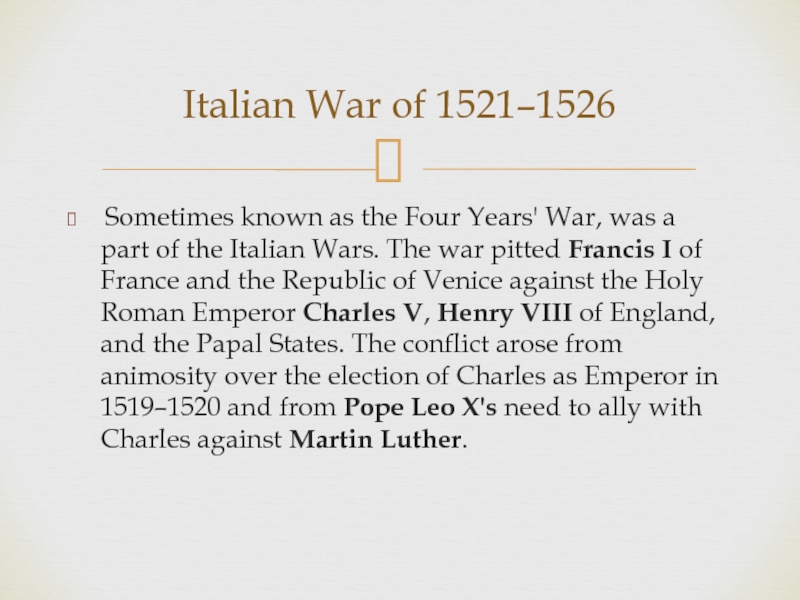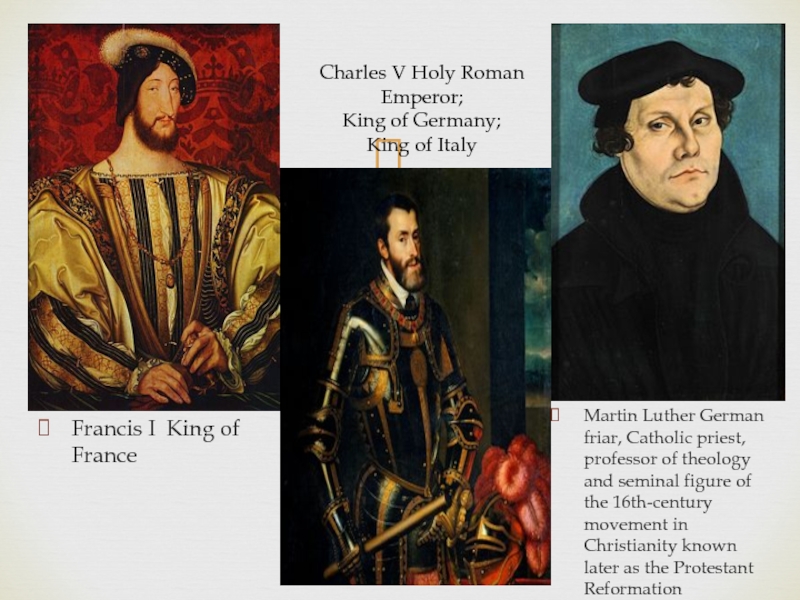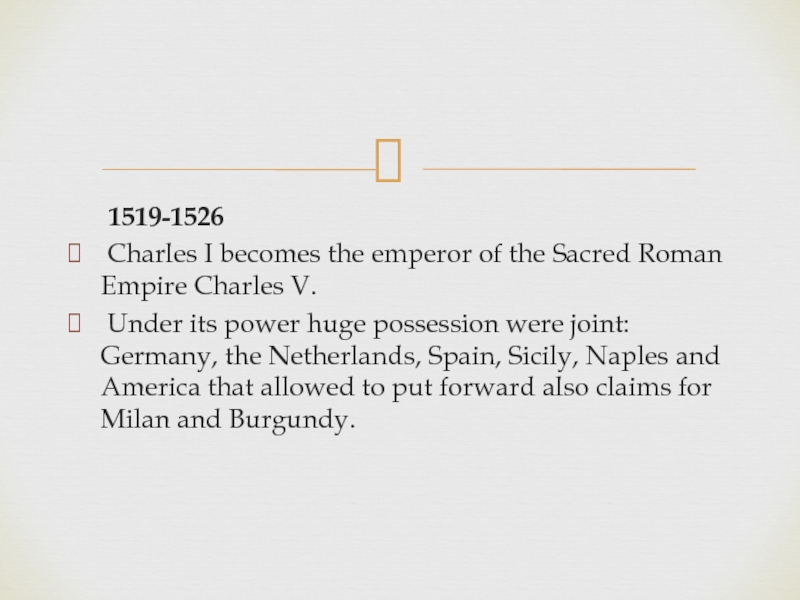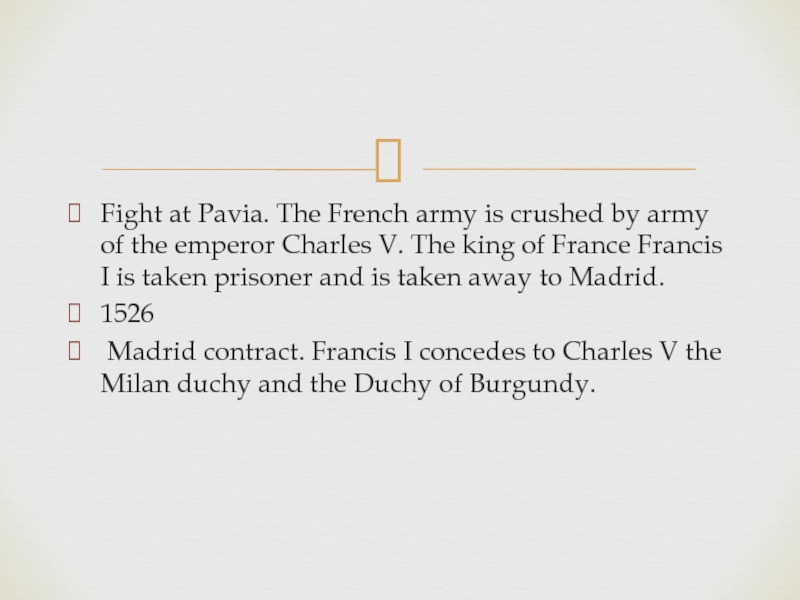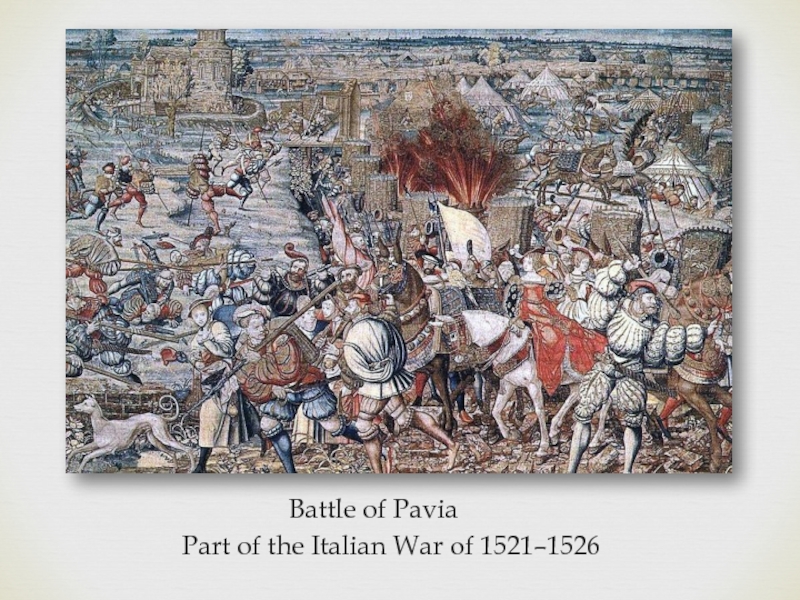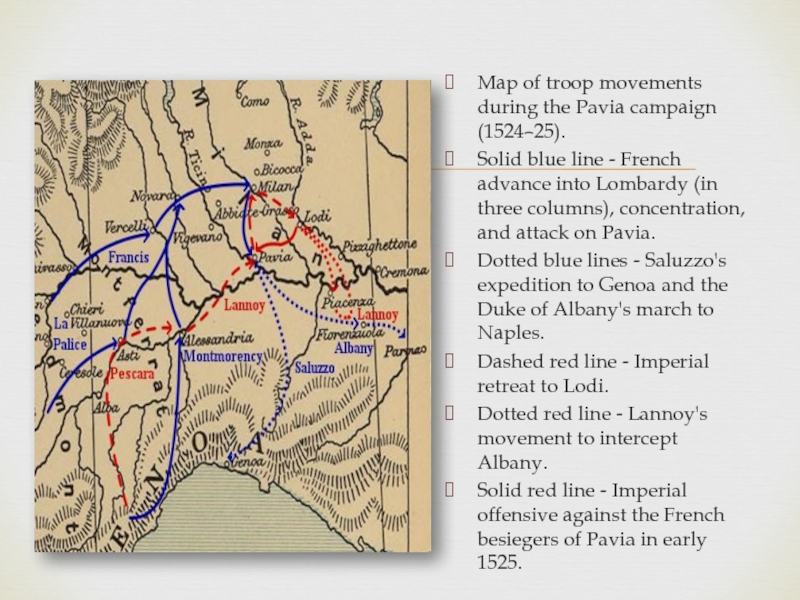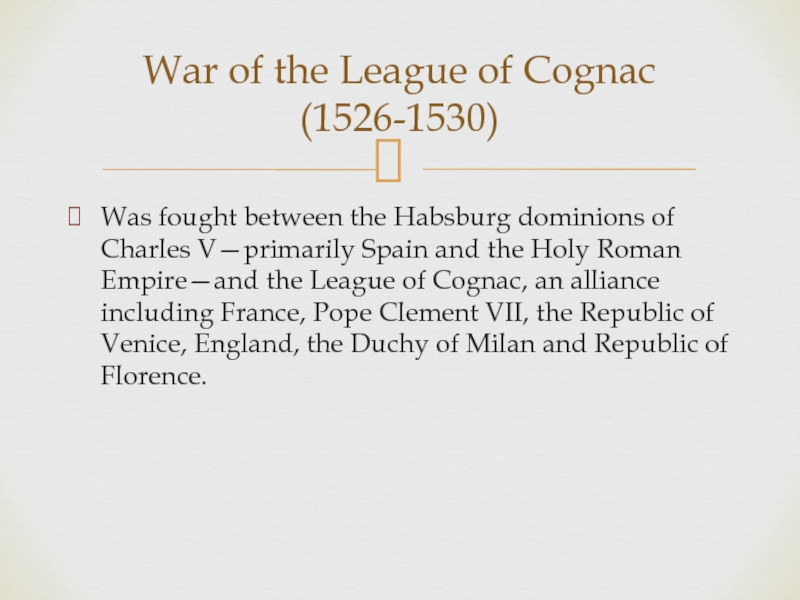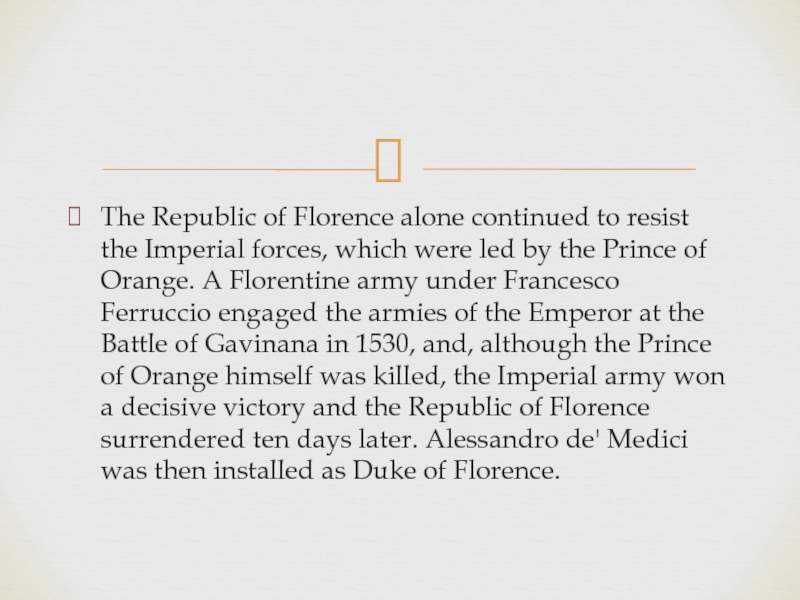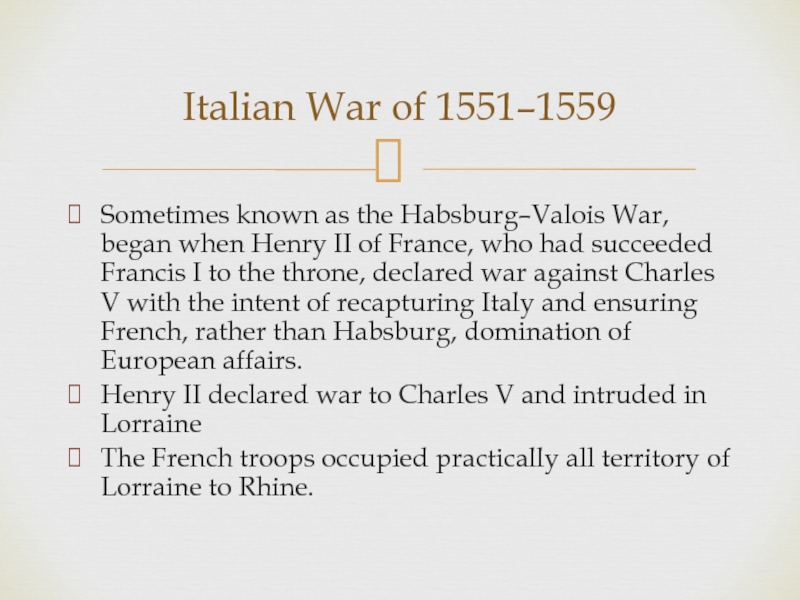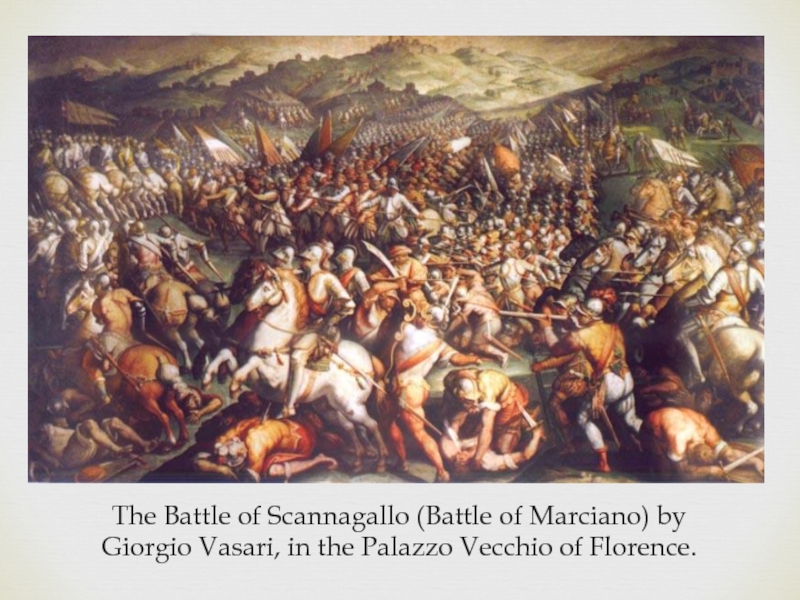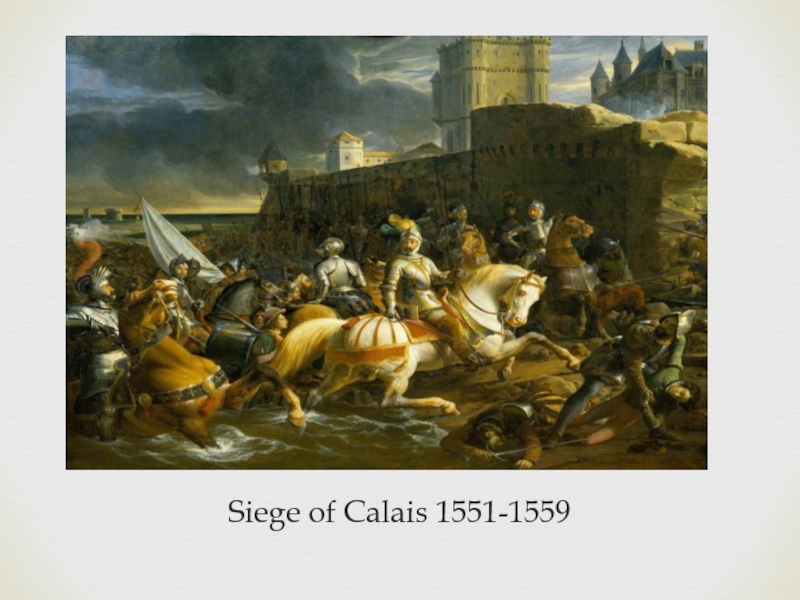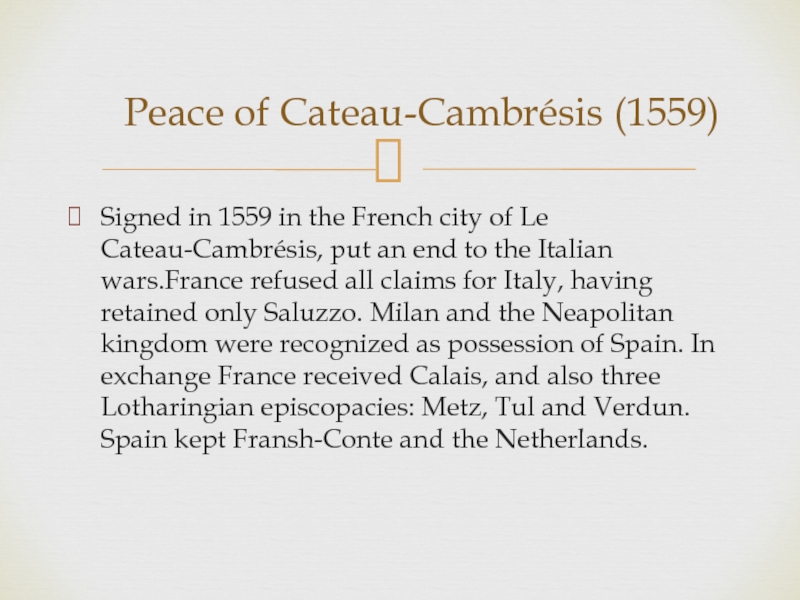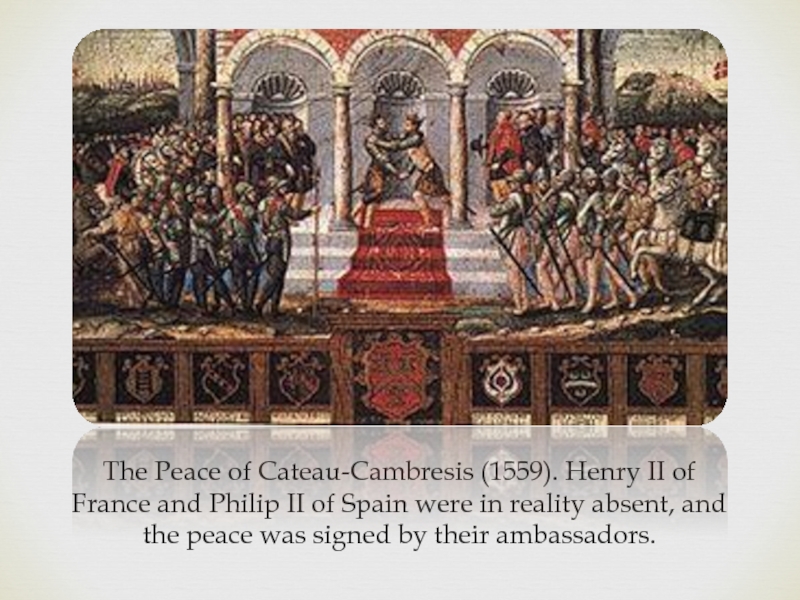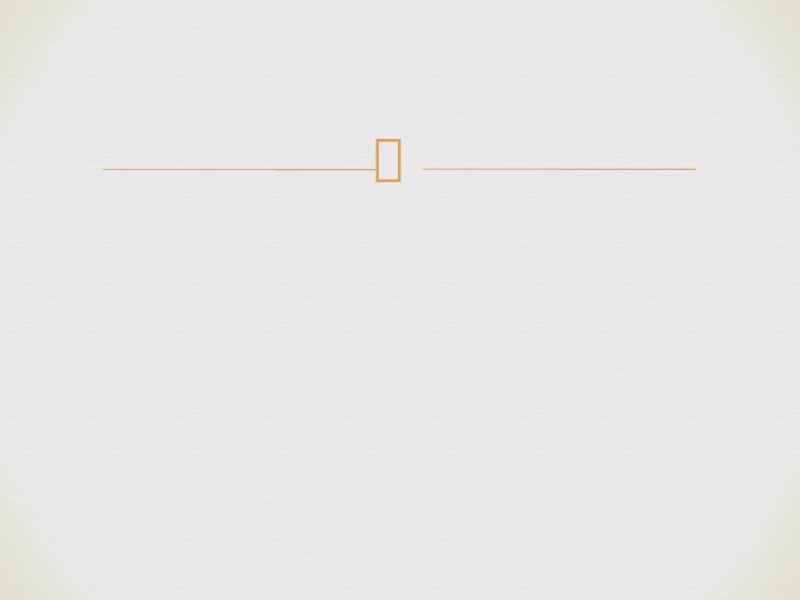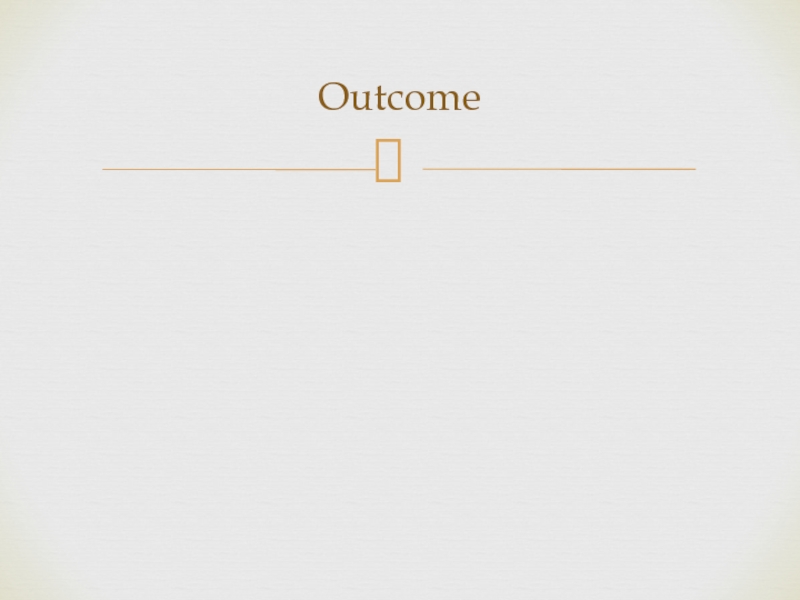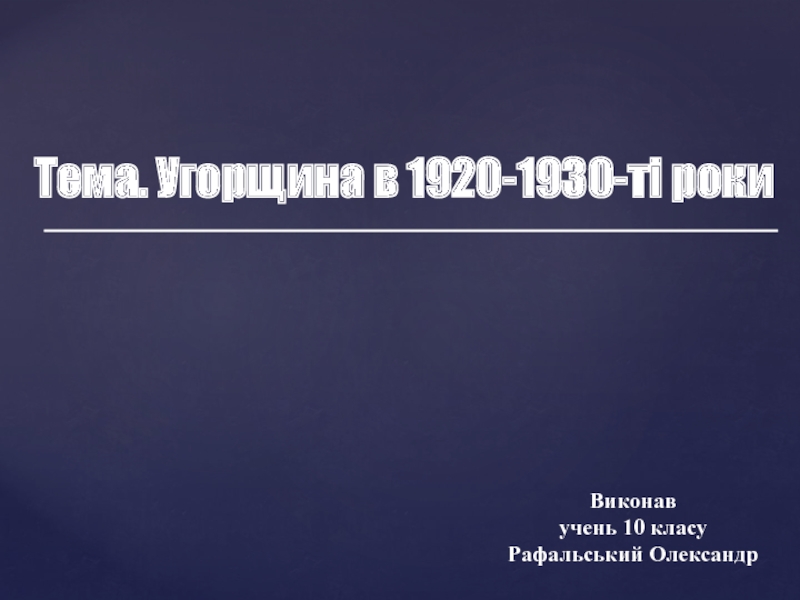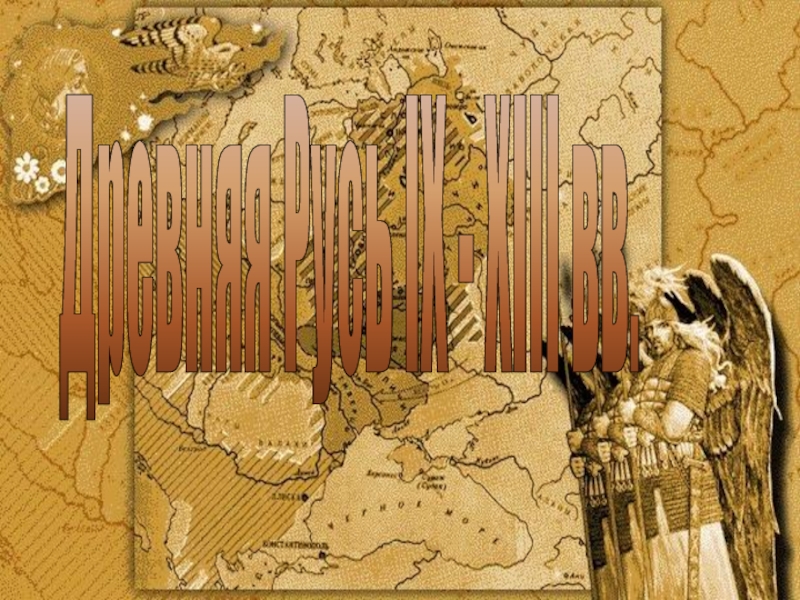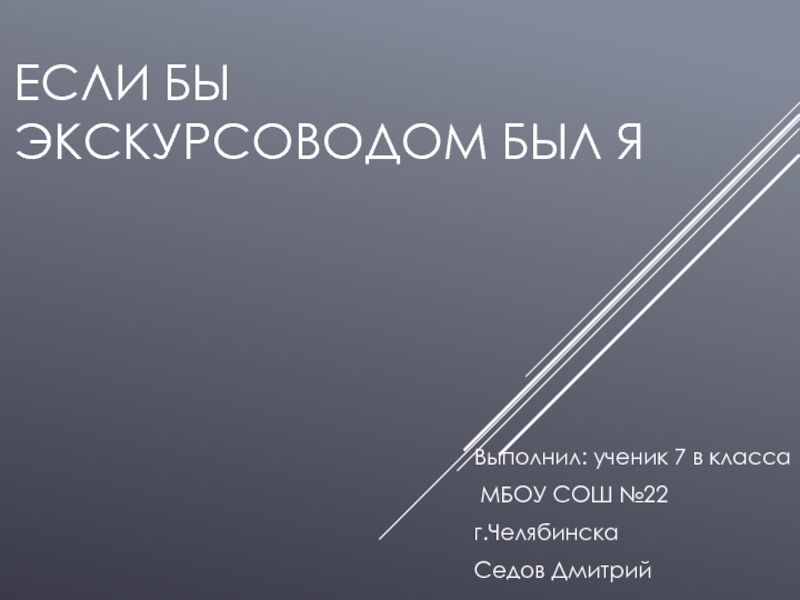- Главная
- Разное
- Дизайн
- Бизнес и предпринимательство
- Аналитика
- Образование
- Развлечения
- Красота и здоровье
- Финансы
- Государство
- Путешествия
- Спорт
- Недвижимость
- Армия
- Графика
- Культурология
- Еда и кулинария
- Лингвистика
- Английский язык
- Астрономия
- Алгебра
- Биология
- География
- Детские презентации
- Информатика
- История
- Литература
- Маркетинг
- Математика
- Медицина
- Менеджмент
- Музыка
- МХК
- Немецкий язык
- ОБЖ
- Обществознание
- Окружающий мир
- Педагогика
- Русский язык
- Технология
- Физика
- Философия
- Химия
- Шаблоны, картинки для презентаций
- Экология
- Экономика
- Юриспруденция
Italian wars 1494-1559 презентация
Содержание
- 1. Italian wars 1494-1559
- 2. Background First Italian war (1494 — 1496)
- 3. The Italian wars (1494 — 1559) —
- 4. After death of the Neapolitan king Fernando
- 5. Lodovico Moro Sforza duke of Milan Ferdinand
- 6. In December 1496 France capitulates
- 7. Sometimes known as Louis XII's Italian War
- 8. Louis XII King of France Ferdinand the Catholic King consort of Castile and León
- 9. On January 31, 1504 Louis XII and
- 10. The War of the League of Cambrai,
- 11. Maximilian I, Holy Roman Emperor(also known as
- 12. The conclusion of the Cambrai contract between
- 13. Sometimes known as the Four Years'
- 14. Charles V Holy Roman Emperor; King of
- 15. 1519-1526 Charles I
- 16. Fight at Pavia. The French army is
- 18. Map of troop movements during the Pavia
- 19. Was fought between the Habsburg dominions of
- 20. The Republic of Florence alone continued to
- 21. Sometimes known as the Habsburg–Valois War, began
- 22. The Battle of Scannagallo (Battle of
- 23. Siege of Calais 1551-1559
- 24. Signed in 1559 in the French city
- 25. The Peace of Cateau-Cambresis (1559). Henry
- 27. Outcome
Слайд 2Background
First Italian war (1494 — 1496)
Second Italian war (1499 — 1505)
War
Italian War of 1521–1526
War of the League of Cognac (1526-1530)
Italian War of 1551–1559
Outcome
Questions
Contents
Слайд 3The Italian wars (1494 — 1559) — a series of the
Background
Слайд 4After death of the Neapolitan king Fernando I in 1494 claims
First Italian war (1494 — 1496)
Слайд 6
In December 1496
France capitulates and leaves the Neapolitan kingdom.
Between the
End of first war
Слайд 7Sometimes known as Louis XII's Italian War or the War over
Second Italian war (1499 — 1505)
Слайд 9On January 31, 1504 Louis XII and Ferdinand signed the peace
As a result the Southern Italy passed under the power of the Spanish king, in Northern hegemony of France remained, and in Central Italy the power of the Pope was restored.
The Treaty of Blois
Слайд 10The War of the League of Cambrai, sometimes known as the
War of the League of Cambrai
Слайд 11Maximilian I, Holy Roman Emperor(also known as King of the Germans)
Pope
Louis XII ruled as King of France from 1498 to 1515 and King of Naples from 1501 to 1504
Слайд 12The conclusion of the Cambrai contract between France, Spain and the
Venice retained northeast part of the country. The Pope kept the state and Tuscany transferred to it to management, Spain got the South of the peninsula, France — Milan
Слайд 13 Sometimes known as the Four Years' War, was a part
Italian War of 1521–1526
Слайд 14Charles V Holy Roman Emperor;
King of Germany;
King of Italy
Francis I King
Martin Luther German friar, Catholic priest, professor of theology and seminal figure of the 16th-century movement in Christianity known later as the Protestant Reformation
Слайд 15 1519-1526
Charles I becomes the emperor of the
Under its power huge possession were joint: Germany, the Netherlands, Spain, Sicily, Naples and America that allowed to put forward also claims for Milan and Burgundy.
Слайд 16Fight at Pavia. The French army is crushed by army of
1526
Madrid contract. Francis I concedes to Charles V the Milan duchy and the Duchy of Burgundy.
Слайд 18Map of troop movements during the Pavia campaign (1524–25).
Solid blue line
Dotted blue lines - Saluzzo's expedition to Genoa and the Duke of Albany's march to Naples.
Dashed red line - Imperial retreat to Lodi.
Dotted red line - Lannoy's movement to intercept Albany.
Solid red line - Imperial offensive against the French besiegers of Pavia in early 1525.
Слайд 19Was fought between the Habsburg dominions of Charles V—primarily Spain and
War of the League of Cognac (1526-1530)
Слайд 20The Republic of Florence alone continued to resist the Imperial forces,
Слайд 21Sometimes known as the Habsburg–Valois War, began when Henry II of
Henry II declared war to Charles V and intruded in Lorraine
The French troops occupied practically all territory of Lorraine to Rhine.
Italian War of 1551–1559
Слайд 22
The Battle of Scannagallo (Battle of Marciano) by Giorgio Vasari, in
Слайд 24Signed in 1559 in the French city of Le Cateau-Cambrésis, put
Peace of Cateau-Cambrésis (1559)
